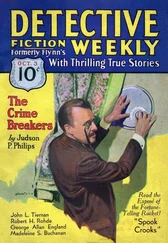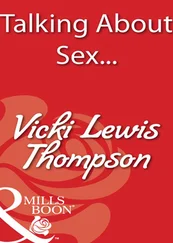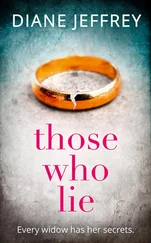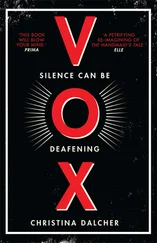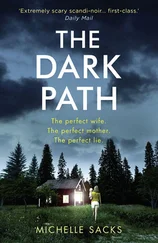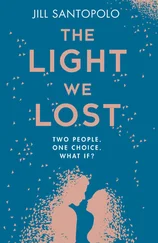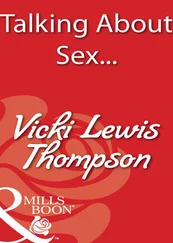The murder in Unnatural Death is equally implausible. It is not really possible to kill someone by injecting air into a vein, at least not with a normal-sized syringe. I am advised that the syringe would have to be so large that the patient would be more likely to die of shock on beholding it than from any effects of the injected air! It is unlikely too that the victim in The Nine Tailors would be killed merely by the clanging of bells, however long, loud and close the peal. And I personally could have advised Mr. Tallboy in Murder Must Advertise of many simpler and surer ways of killing his blackmailer than by climbing onto the roof and using a catapult through the skylight. Today, in choosing how to despatch our victims, we are less concerned with originality and ingenuity than with practical, scientific and psychological credibility.
But one way in which I suggest that Dorothy L. Sayers was in advance of her age is the realism with which she describes the finding of the body. She well knew the importance of this moment of high drama and she was not too squeamish to show us something of the horror of violent death. In this she was very different from her co-crime-writer Agatha Christie, who obviously felt a deep repugnance for describing physical violence. One cannot imagine Agatha Christie describing with such realism the finding by Harriet Vane of the body with its throat cut on the Flat-Iron Rock.
It was a corpse. Not the sort of corpse there could be any doubt about, either… Indeed, if the head did not come off in Harriet’s hands, it was only because the spine was intact, for the larynx and all the great vessels of the neck had been severed and a frightful stream, bright red and glistening, was running over the surface of the rock and dripping into a little hollow below.
Harriet put the head down again and felt suddenly sick. She had written often enough about this kind of corpse, but meeting the real thing in the flesh was quite different. She had not realised how butcherly the severed vessels would look, and she had not reckoned with the horrid halitus of blood, which steamed to her nostrils under the blazing sun.
To the thirties’ writer of detective fiction death was, of course, necessary but, however ingenious or bloody, it was rarely allowed to horrify or distress. Today-and I suggest that Dorothy L. Sayers had a potent, and perhaps unacknowledged, influence-we aim for greater realism. Murder, the contaminating and unique crime, is messy, horrifying and tragic, and the modern reader of crime fiction is not spared these realities.
But in the more minor expediencies of murder Sayers was typical of her time. She had a liking for maps, rough illustrative drawings, ciphers and house plans. A plan which particularly intrigues me is provided in Clouds of Witness , where victim and suspects are guests of the Duke of Denver at his Yorkshire shooting box, Riddles-dale Lodge. A plan of the second floor shows that eight people had to make do with one small bathroom and separate lavatory, a lack which may partly explain the English obsession with the state of their bowels.
For many of Dorothy L. Sayers’s readers, perhaps for most, Gaudy Night stands at the peak of her artistic achievement. It is unique among her novels-and rare among detective stories-in not having a mysterious death at its heart. There are, of course, two attempted murders, one of the over-sensitive student Miss Newland and one of Harriet Vane herself. The criticism made at the time by female academics was that the novel was out of date, portraying the Oxford not of the thirties, but of Sayers’s own student days. The women’s college she describes with such loving recollection, with its rigid segregation of the sexes and its formal manners, is, of course, one that has passed away for ever. What relevance has the novel, therefore, for the reader of today and for today’s writer of detective fiction?
For me Gaudy Night is one of the most successful marriages of the puzzle with the novel of social realism and serious purpose. It tells me, as a writer of today, that it is possible to construct a credible and enthralling mystery and marry it successfully to a theme of psychological subtlety, and this is perhaps the most important of Dorothy L. Sayers’s legacies to writers and readers. She wrote to her friend Muriel St. Clare Byrne that Gaudy Night was not a detective story at all, but a novel of an almost entirely psychological kind with a mild detective interest. But here I must take issue with the author-a presumptuous and perhaps a dangerous thing to do. She did herself less than justice. Gaudy Night is a true detective story. We want to know who among a closed circle of suspects is responsible for the malicious disruption at Shrewsbury College, and the clues to the mystery are fairly, indeed plainly, presented. I can still recall my first reading of the novel, when I was sixteen, and my self-disgust at my failure to identify the culprit when all the necessary information had been so carefully, if cunningly, provided.
Margery Allingham also portrayed aspects of the age in which she wrote, but was happy to range outside territory with which she was familiar. Flowers for the Judge deals with publishing; Dancers in Mourning with the frenetic world of the theatrical star; The Fashion in Shrouds with the ephemeral mystique of a high-fashion house. All provide a vivid picture of the community in which they are set. Her writing life was long (forty-five years) and apart from published articles, broadcasts and book reviews, she wrote twenty novels of crime and adventure between 1929 and 1966. The novels became increasingly sophisticated, concentrating more on character and milieu than on mystery, and in 1961 she wrote that the crime novel could be “a kind of reflection on society’s conscience.” This was to become increasingly true of detective fiction generally, but Allingham herself reflected rather than criticised the age in which her stories are set. She had considerable descriptive gifts, especially for places: the seedier squares of north-west London, decaying post-war streets, the salt marshes of the Essex coast. Like Dorothy L. Sayers, she created an upper-class detective (in Albert Campion)-so grand, apparently, that the name of his mother can only be whispered-but one who developed psychological subtlety and, indeed, even changed his appearance as she found the original Campion inadequate to the widening scope of her creative art.
She is notable too for the creation of eccentrics who never degenerate into caricatures, except perhaps for Magersfontein Lugg, who, despite the occasional usefulness of skills developed in his criminal past, is a little too much the traditional stage comedy cockney to be convincing and who would surely be too unsuitable a manservant for even Campion to tolerate. One of the Allingham novels which, for me, best illustrates her talent is the cleverly named More Work for the Undertaker (Allingham was good at choosing titles), published in 1949. In this novel, set in one of the gloomier streets of post-war London, she combined the eccentric Palinode household with a vivid evocation of place and a strong and continually exciting narrative to produce what was recognised at the time as a distinguished detective story.
Ngaio Marsh has justified her own statement that “The mechanics of a detective story may be shamelessly contrived but the writing need not be.” It has been said that the formula for a successful detective story is 50 percent good detection, 25 percent character and 25 percent what the writer knows best. Ngaio Marsh, a New Zealander, made good use of her own distinguished career in the theatre by setting some of her most successful books, notably Enter a Murderer, Opening Night and Death at the Dolphin , in the world of drama, making excellent use of backstage intrigue and giving a lively account of the problems and mechanics of running a professional company of players in the years between the wars. She is less concerned with the psychology of her characters than is Margery Allingham, and the lengthy interrogations by her urbane detective, Superintendent Roderick Alleyn, have their longueurs, but both women are novelists, not merely fabricators of ingenious puzzles. Both sought, not always successfully, to reconcile the conventions of the classical detective story with the novel of social realism. But because Ngaio Marsh experienced Britain as a long-staying visitor who saw what she thought of as a second homeland through somewhat naïve and uncritical eyes, she gives a less accurate, more idealised, nostalgic and regrettably sometimes snobbish picture of England than do her crime-writing contemporaries. I have most enjoyed the books set in her native New Zealand, Vintage Murder (1937), Colour Scheme (1943) and Died in the Wool (1945), where landscapes, characters and plot are interrelated and she brings the people and the soil of her native county vividly before us.
Читать дальше


